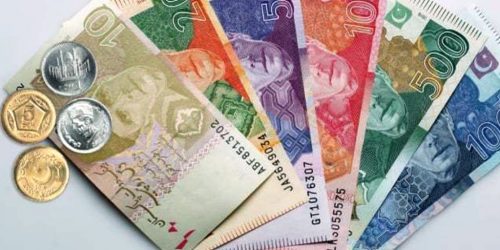The circular debt was around Rs2 trillion by June 20. The toll is still growing, and without doing anything, it will grow at a faster pace. Out of this Rs2 trillion, around half is on PHPL books and the remaining half is on CPPA-G balance sheet. PHPL debt is being paid off to power suppliers and has nothing to do with energy sector liquidity problem. The real challenge is around CPPA-G debt.
The problem is not only the flow (incremental debt) but also of the stock (accumulated debt). On stock, the interest has to be paid and the interest cost is also becoming part of circular debt in the form of late payment surcharge (LPS). The LPS based on average interest cost of 10 percent is estimated around Rs120-130 billion which is around 1.2-1.3/Kwh on the number of units sold in FY20.
Increasing electricity tariff is not the optimal solution. As the consumption on the grid (NTDC) may decline with further increase in tariff. Lately, higher consumption of FO indicates that industry is increasing its captive generation on inefficient FO plants, as this is costing them less (in days of low oil prices) as compared to grid electricity.
The initial goal should be to reduce debt stock on CPPA-G books for two reasons. One is to deal with LPS which is growing every day. The other is to provide much-need liquidity to power suppliers (IPPs) and in turn to their fuel suppliers (oil and gas marketing companies) who are too holding back payables due to their suppliers (refineries and E&P).
The modus operandi should be to clean up the CPPA-G book as much as government can do without issuing fresh debt or direct fiscal subsidy. Firstly, net off (partially) circular debt by the estimated amount of past excess profits by IPPs. These are recoverable as per the MOUs signed with IPPs in recent government negotiation. Part of the debt can be settled against the DISCOs’ overdue receivables from provincial government and other defaulters. Thirdly, the LPS of IPPs can be netted off against payables due to public sector companies (PSEs) – as latter are not charging LPS on their balance sheets.
It is critical to do this as soon as possible. That is to reduce the LPS which is accruing at k+4.5 percent. The other reason is to avoid breakdown of cash starved energy value chain. The government has two options to deal with CPPA-G debt (after netting off by above mentioned ways). One is direct fiscal intervention and the other is shifting CPPA-G debt to PHPL through issuance of Sukuks etc.
Direct fiscal intervention can be done by budgeted energy subsidy or capital injection into DISCOs. Pumping capital in DISCOs can re-capitalize weaker DISCOs which would help in management change under Public Private Partnership. One must not forget that government is fiscally strapped and it’s hard to inject fresh liquidity. But there are non-tax and tax revenue gains to partially compensate the cash injection. Energy PSEs’ dividend paying capacity is constrained due to growing receivables. Once circular debt is settled, these can pay dividends to boost government’s non-tax revenues. Similarly, government can generate revenues from taxes on private and public companies’ dividends.
The combined equity of three PSEs (OGDC, PPL and GHPL) is in excess of Rs 1 trillion. But a good chunk of it is tied up in trade debts. Resolving circular debt can unleash the potential of these companies. However, a good chunk of trade debts of E&P companies is owed by gas marketing companies, where another circular debt is in making. Resolving gas circular debt simultaneously is crucial for obtaining better results.
The second option for power circular debt reduction is to shift CPPA-G debt to PHPL. The PHPL can issue long term debt backed by government sovereign guarantee. The amount raised can be passed to CPPA-G to clear its debt. And this will resolve the cash flow issue of entire energy chain. However, there would be additional cost of the debt, though still lower than what is being charged by IPPs as LPS.
One view is to use SBP refinancing facility for raising debt by PHPL. If SBP refinances it at 1 percent to banks (like it does from export refinancing), the overall debt cost could be 2 percent versus 8 percent (assuming Kibor at 7%).
However, this could create a moral hazard problem, like any other refinancing scheme. But seeing the magnitude and seriousness of problem, solving it must be the top consideration. IMF may not like the debt creation on PHPL books as this has to be backed by sovereign guarantee. The IMF would also have issues on refinancing as the Fund’s thinking is to have direct subsidy mechanism and it discourages refinancing schemes.
The ideal way is to have a combination of direct fiscal intervention and raising debt on PHPL book. This will address the stock of circular debt and would resolve the liquidity issue of the energy value chain. But something has to be done on to fix the tap. The circular debt is growing and the pace will increase with new plants coming online as capacity charge grow with every new plant.
That tap can be tightened by debt elongation of new plants (more on this later), integration of NTDC system with KE by novating surplus capacity in NTDC system (in south) to KE (in deficit), incentivizing captive power generation to move to grid through pricing at marginal cost for industrial consumer, and electrification of energy usage in domestic sector (such as water heating and cooking) and transport sector through promoting electric vehicles.







